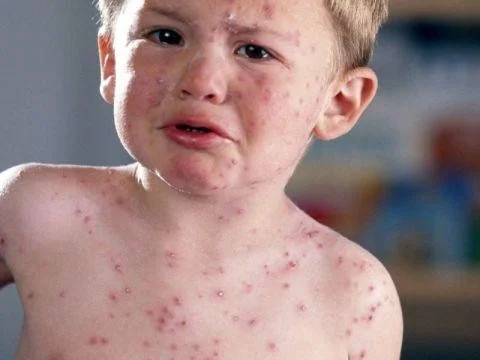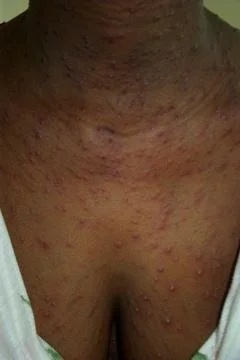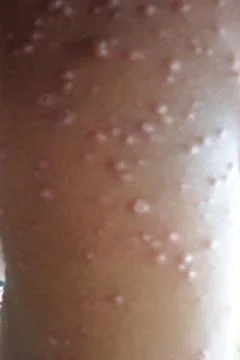Chicken Pox
- Chickenpox (varicella) and herpes zoster (shingles) are distinct diseases caused by the varicella-zoster virus
- Chickenpox is a bollus (blister disease).
- Chickenpox is a highly contagious disease that usually occurs in childhood
- It is the manifestation of a primary infection with varicella-zoster virus
Transmission
- Approximately 90% of chickenpox cases occur in children under 10 years of age
- The infection is transmitted by airborne droplets containing the virus
- Incubation period is 2 weeks after exposure
- The patient is contagious some few days before the rash appears
Clinical features
Before skin lesions (2 or 3 days) :
- Young children have a low-grade fever, and general malaise
- Adults have fever, chills, malaise, headache, and possibly, sore throat appear before the rash
Clinical features (cont.)
- Blisters appear first on the face and scalp, then on the trunk, and then on the arms and legs
- Itchy blisters initially appear on erythematous base
- Blisters are typically with central punctum
- They resolve in 1 to 3 weeks, usually without scarring.
- Once all the lesions are crusted over, patient is no longer contagious.
Treatment
- No specific treatment is required
- Symptomatic relief from itching an important part of treatment
- Calamine lotion can be applied, the cool sensation helps control the itching
- Systemic antibiotics is given in some cases to prevent secondary bacterial infection (but should not be a routine for all cases)
Ulcer Blister Papule



